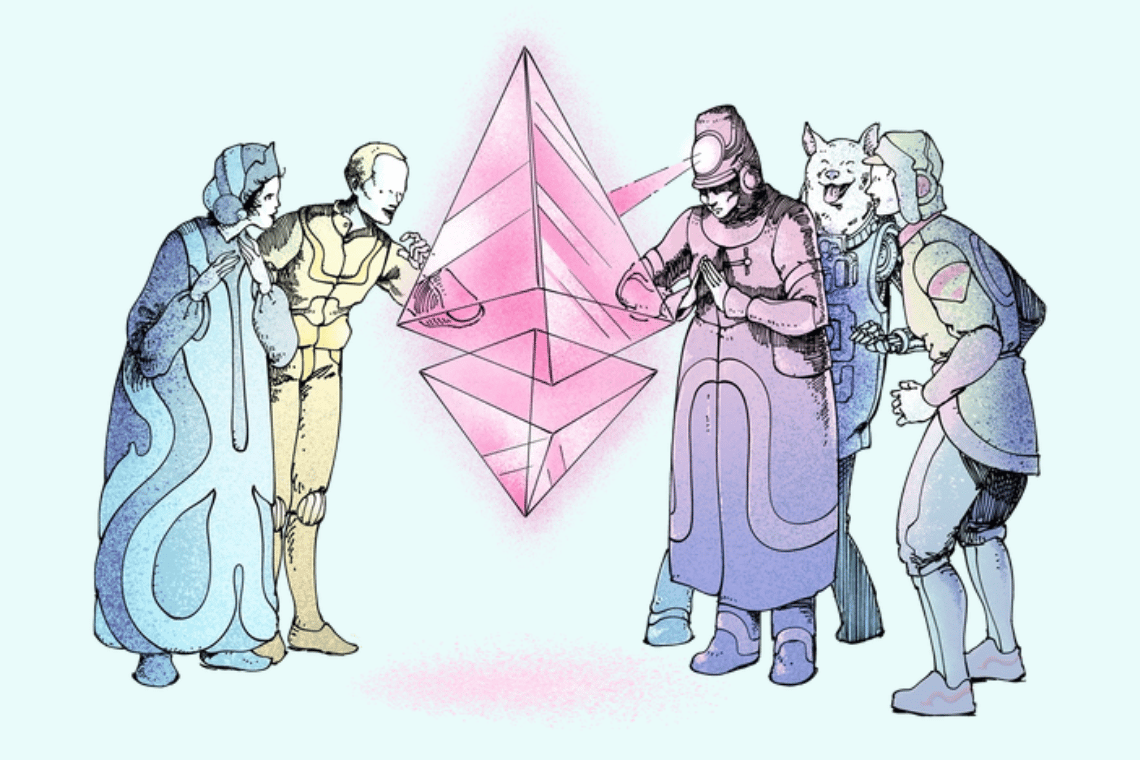From a strictly technical point of view, the so-called Ethereum Merge consists of merging the old blockchain, based on Proof-of-Work, with the new one based on Proof-of-Stake.
Thus, the most important thing is not the merge itself, but the replacement of PoW with PoS as the consensus mechanism.
Summary
Ethereum, from birth to the Merge
Ethereum was born in 2015, when there were not yet many successful experiences of decentralized blockchain networks based on PoS. That is why PoW was chosen as the consensus mechanism, partly because it was almost six years that PoW had been working very well on Bitcoin.
In other words, in 2015 it did not seem possible to start a project like Ethereum by choosing PoS as the consensus mechanism, because then it would have meant risking too much in terms of, above all, security.
This opposition was known to Ethereum co-founder Vitalik Buterin as far back as 2013, when he wrote explicitly in the Ethereum project whitepaper that Proof-of-Stake was one of two consensus mechanisms that could be used as a starting point for a cryptocurrency.
Indeed, although the choice was clearly geared toward PoW, Buterin wrote:
“Note that in the future, it is likely that Ethereum will switch to a proof-of-stake model.”
Thus, the idea of moving from PoW to PoS was already present from the early days of the Ethereum project, particularly for two reasons.
The potential of PoS for a broader ecosystem
The first is that PoS potentially allows more transactions to be recorded on the blockchain in the unit of time, which is to say that it increases the so-called throughput measured in TPS (Transactions Per Second).
A project such as Ethereum, which already from its whitepaper presented itself with the ambition to become a true open platform that can be used for many different purposes and in many sectors not only financial, needed to be able to handle throughput significantly higher than that of Bitcoin.
It is enough to consider that on Bitcoin’s blockchain about 3,000 transactions can be recorded per block, or every 10 minutes, and this makes its throughput very low. This is why it was necessary to create the Layer 2 Lightning Network, which does not write transactions to the blockchain.
Ethereum’s goal, on the other hand, was to write as many transactions to the blockchain as possible, limiting the use of layer 2 solutions.

Why PoS is more efficient than PoW
The second reason is that PoW requires high energy consumption, and this inevitably causes high costs of recording on the blockchain. In contrast, PoS consumes very little by comparison, making it possible to potentially even charge very low fees on on-chain transactions.
From all this, it is clear that the Merge was absolutely inevitable, and that it was only a matter of time before it arrived.
In spite of this, though, seven years have passed since the actual launch of the project in 2015 before the actual transition to PoS was possible, because replacing the consensus mechanism of a network that is so widely used, and especially with so much value, is not at all an easy thing to do and potentially very risky.
The development of the PoS transition idea: from theory to practice
The Ethereum development team preferred to use a great deal of caution so as to arrive at being as sure as possible that such a transition could be made painlessly, or nearly so, and this took a long time.
However, it has since emerged that the potential benefits of PoS with regard to throughput and fee cost had probably been overestimated, because the real benefits that are estimated nowadays are far less.
Buterin himself long ago stated that he felt the improvements brought to Ethereum by the introduction of PoS regarding speed and cost were not sufficient, so much so that he himself encouraged the development of layer 2 solutions on Ethereum as well.
Given that initially the consensus mechanism used was PoW, and given that this situation lasted seven years, he did not wait for the Merge to start developing Layer 2 solutions for this ecosystem.
Although these solutions primarily serve to improve off-chain throughput and reduce fees, they should not, however, be understood as alternatives to moving to PoS, but as complementary solutions.
Ethereum becomes greener thanks to the Merge
The move to PoS also has another huge benefit, namely the significant reduction in environmental impact due to the drastic drop in consumption required to run the blockchain.
Thus, the Merge will probably improve throughput, but by a small amount, and reduce fees, but by a small amount. Indeed, there is even a possibility that these improvements will not be particularly significant, so Layer 2-based solutions remain absolutely necessary.
The Merge lowers energy consumption, something that can only be achieved by moving to PoS. In such a scenario, it is well understood how necessary it is to proceed with both solutions.
The ability to increase throughput and reduce Layer 2 fees is vastly superior to moving from PoW to PoS. It is just another level of performance, similar if not potentially superior to that of networks such as Visa or MasterCard.
The need for Layer 2s
From this point of view it now seems clear that even Ethereum cannot forgo scaling solutions based on layer 2, since this is the only way it can truly achieve the goals that were set from the beginning.
The Merge, therefore, is a very important, epochal step, but not enough to give Ethereum the quantum leap that will really bring it to rival technologies such as those of Visa and MasterCard.
Not least because the move to PoS appears that it will help the development and deployment of Layer 2-based solutions, as it should become easier for developers to create new ones or enhance existing ones.
Several such solutions have already been created over the years, some of which, such as Polygon, are already widely in use. So far, however, they do not yet seem to have succeeded in having an impact on Ethereum comparable to what Lightning Network is having on Bitcoin.
This difference is particularly evident in the reduction of fees on on-chain transactions, which has become significant on Bitcoin as early as last year, while not yet on Ethereum. In fact, almost consistently the cost of a single on-chain transaction on Ethereum is currently more than double that on Bitcoin, although since the crypto markets collapse in May 2022 the fees on Ethereum have also begun to fall somewhat.
The Merge should further help this trend, and the possible further development of layer 2 solutions could later accentuate it enough perhaps to even allow fees to fall below the already low levels in place on Bitcoin’s blockchain.
Nevertheless, it is worth remembering that while the Merge is in the home stretch, widespread deployment of Layer 2-based Ethereum scaling solutions may still take a while.




